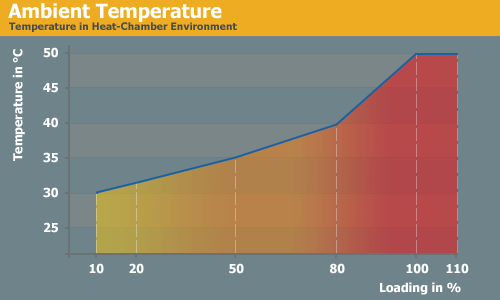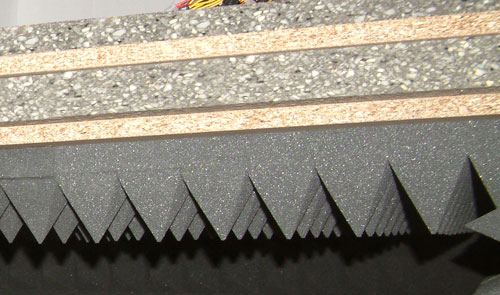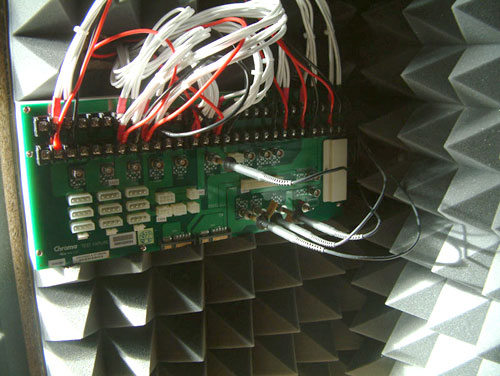Enermax Revolution 85+ High Efficiency PSU
by Christoph Katzer on November 6, 2008 4:15 AM EST- Posted in
- Cases/Cooling/PSUs
Testing with the Chroma ATE Programmable Load

Our test equipment consists of two Chroma programmable DC Loads that enable us to test power supplies with an output of up to 1500W. The biggest advantage of the Chroma DC Loads is simply the high precision it provides. It can measure differences as small as 0.001V and 0.0001A, which will provide us with best-in-class results.
When programming the Chroma with specific amounts of load calculated according to the ATX norm, we are able to load power supplies to an exact percentage. We can now show results at every specific percentage needed. To get the best overview of a power supply, we load each unit with 10%, 20%, 50%, 80%, 100%, and 110% of the specified output. This is easy to calculate for a 1000W power supply: the 10% load is 100W and 110% load is 1100W. Remember that this is the amount of power the PSU delivers; due to inefficiencies, a power supply will actually draw more power from the wall.
Note: If you would like to know more about our testing methodology, equipment, and environment, please read our PSU testing overview.
We have added an additional 10% on the highest load to see how the units perform with overload. This test will be performed in all future reviews. The overload test is performed at room temperature as well as under more stressful conditions; to ensure we are not too cruel to the power supplies, we will keep the ambient temperature at 50°C in the stress test. Experience shows that many units can stand the overload at room temperature but will experience problems with higher temperature and overload together. Only the best-built units will survive this.

The Testing Environment
There is one flaw in testing power supplies with programmable loads while trying to measure the sound pressure levels at the same time. Because the programmable loads get very loud, there is no chance of hearing the power supply on the test stand. In order to make accurate measurements of the noise levels we needed a way to separate the test unit and the programmable loads. Our solution was to build a very thick box around the unit.

We concluded that a five-layer box with a total thickness of 6" (15cm) containing two layers of wood and three layers of special foam would suffice. It is designed as a box within a box. The inner box does not touch any part of the outer box, making it difficult for acoustic noise to pass through in the form of vibration. Each box is isolated on both sides with a layer of heavy foam that is normally used to insulate engines. On the inside we have an additional layer of 4" (10cm) thick pyramidal foam on every side of the box to eliminate the acoustic waves coming from the test object as well as we can.

To ensure a completely closed system we installed the printed circuit board that the connectors of the power supply are attached to inside the anechoic room/box. In other box designs, you would need to put all the cables through the wall. Unfortunately, that would result in the inside of the box not being fully isolated anymore. Our design keeps everything that needs to be connected inside of the box and maintains isolation.










49 Comments
View All Comments
strikeback03 - Friday, November 7, 2008 - link
You should have stated you were using a 700W power supply, your post indicated you thought you were drawing 700W.http://www.anandtech.com/casecoolingpsus/showdoc.a...">http://www.anandtech.com/casecoolingpsus/showdoc.a...
I have a similar system on my desk here at work (only 3 GHz on the q6600, but it is a B3 stepping; 2 HDD, 1 optical, 7300GT instead 0f 9800GX2) and idle is about 100 W at the wall, peak draw is like 160-170. Your system probably draws another 120-150W at idle, and maybe 250 at full power. A 700W power supply is quite reasonable for that system, as it probably uses 200-250 at idle and another 150-200 at full bore. It won't draw 700W.
Freddo - Thursday, November 6, 2008 - link
This PSU is so cool, as it's very energy efficient & have modular cables.I would really like to see a PSU as energy efficient as this one, but down at ~400W or so instead, and with passive cooling, or at least "half passive", with a small 80mm fan outwards that only starts to spin when it's near full load and getting hot.
Christoph Katzer - Thursday, November 6, 2008 - link
Wait until next year's ~CES/CeBIT, there is a manufacturer who might have exactly what you're waiting for...iwodo - Thursday, November 6, 2008 - link
As Anand as well as other tech site has confirm, even with GTX SLI and Quad Core CPU, you will hardly need more then 500W, lets give it a peak spike of 40% will only means 700W.So why are we having PSU that starts at 800W? When only less then 5% of market uses it. Not to mention 1000W PSU.
Shmak - Thursday, November 6, 2008 - link
All power supplies reach their efficiency peak at about 50% load, which is shown on any psu review you care to look at. Therefore, if your system idles at around 500W, a 1000W psu will likely be most efficient for your build.GaryJohnson - Thursday, November 6, 2008 - link
Watts don't mean anything. What matters is having enough stable amps on a couple (or single) 12v rails to power SLI or Crossfire.OddJensen - Thursday, November 6, 2008 - link
Try a Core i7 w/HD4870X2 in crossfire. You'll soon find out why we have 1kW PSUs.larson0699 - Thursday, November 6, 2008 - link
How about a Pentium D or Skulltrail with quad GTX 280's?Do like the small jets and shut off everything else before powering up THOSE engines.
Nigel.k.l - Tuesday, November 26, 2019 - link
I purchased mine back in 09 and its still running, I7 8700k 1070ti system